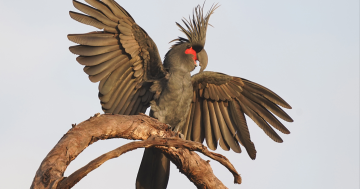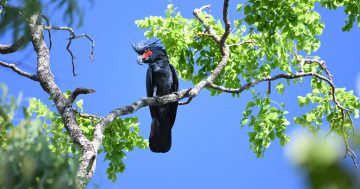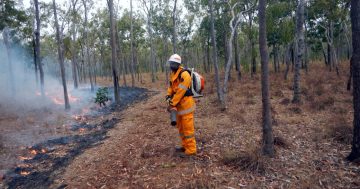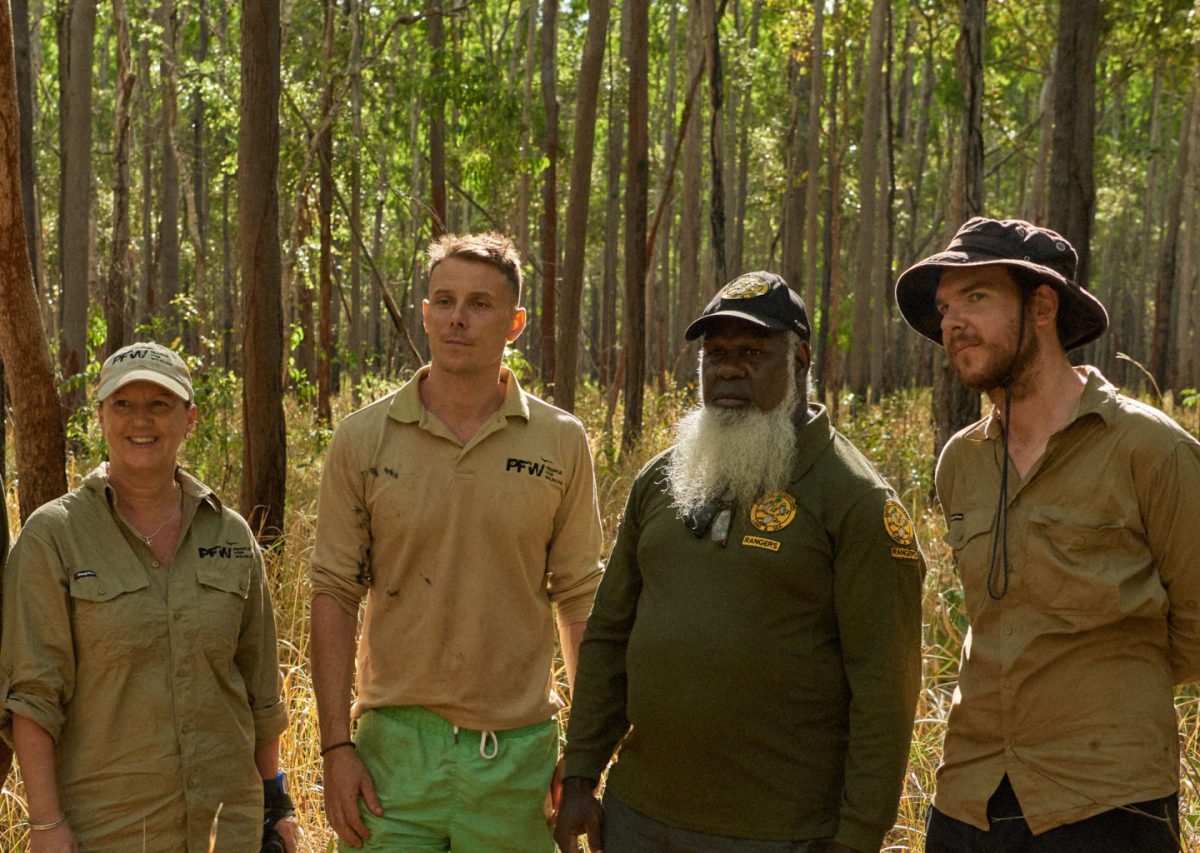
People For Wildlife’s Sophie Buckman, Dr Daniel Natusch, Dr Ben Muller, and Apudthama Traditional Owner Thomas Savage briefly reflect on their project’s national recognition to save the iconic palm cockatoo. Photo: Supplied.
A Cape York conservation project recognised for its work on the national stage this week has provided new-found hope for Australia’s largest parrot species.
The palm cockatoo is iconic to the vast rainforests and savannas of the Cape York Peninsula, but a critical shortage of old tree hollows needed for breeding has put the unique bird on the endangered species list.
People for Wildlife’s (PFW) Palm Cockatoo Breeding Habitat Restoration project, which works with the Apudthama Land Trust of the Northern Peninsula Area, was named a bronze tier winner of the Australian Geographic Society’s Awards for Nature on Thursday 23 October.
The project will receive $20,000 to help it create artificial hollows, secure firebreaks and monitor nests with cameras and acoustic recorders to increase the bird’s population.
PFW executive director Dr Daniel Natusch said experts estimated fewer than 2000 palm cockatoos remained due to habitat loss from issues such as land clearing, inappropriate fire management, and increasing wildfires.
Because of their size, palm cockatoos rely on 200 to 300-year-old trees for their habitat.
Dr Natusch said this involved a complex process of trees being hollowed out by termites and fungi, before needing a cyclone to twist off the top to expose the trunk’s centre which was then slowly eroded by rain.
The process is estimated to take more than 100 years. But with the centre of the tree gone, it becomes more vulnerable to intense fires and strong winds, making palm cockatoo real estate difficult to maintain and heavily fought over.
“We’re creating artificial hollows made of resin, putting in place hollows from fallen-down timber that we hoist up into the tree. Then we’re augmenting existing hollows and manipulating them so they better resemble ones that have been naturally created,” Dr Natusch said.
“This funding will allow us to create more trial hollows and continue monitoring them over the long term because these are not dumb birds.
“They’re only going to begin using those hollows, we suspect, after they really familiarise themselves and understand they’re not a threat. So long-term monitoring is key to figuring out the efficacy of the different types of hollows we’re trying.”
He said since the project began in 2023, the artificial habitats had been used as part of the palm cockatoos’ unique mating process, in which males rhythmically tapped on tree trunks with sticks to court the females. But as yet none of the habitats had been used for breeding.
Despite palm cockatoos having the lowest reported breeding success rates of any parrot species – typically one egg every two years – Dr Natusch said there was still hope the birds would utilise the man-made habitats for breeding.
“We haven’t had any eggs deposited in the hollows we’ve created, but certainly the fact they’re in consideration by the birds is a good first step,” he said.
“Those artificial hollows went in about three weeks before the breeding season started, so given we’ve only had one breeding season since, it’s still relatively early days.”
Watch this video to better understand the award-winning Palm Cockatoo Breeding Habitat Restoration project in our own backyard.
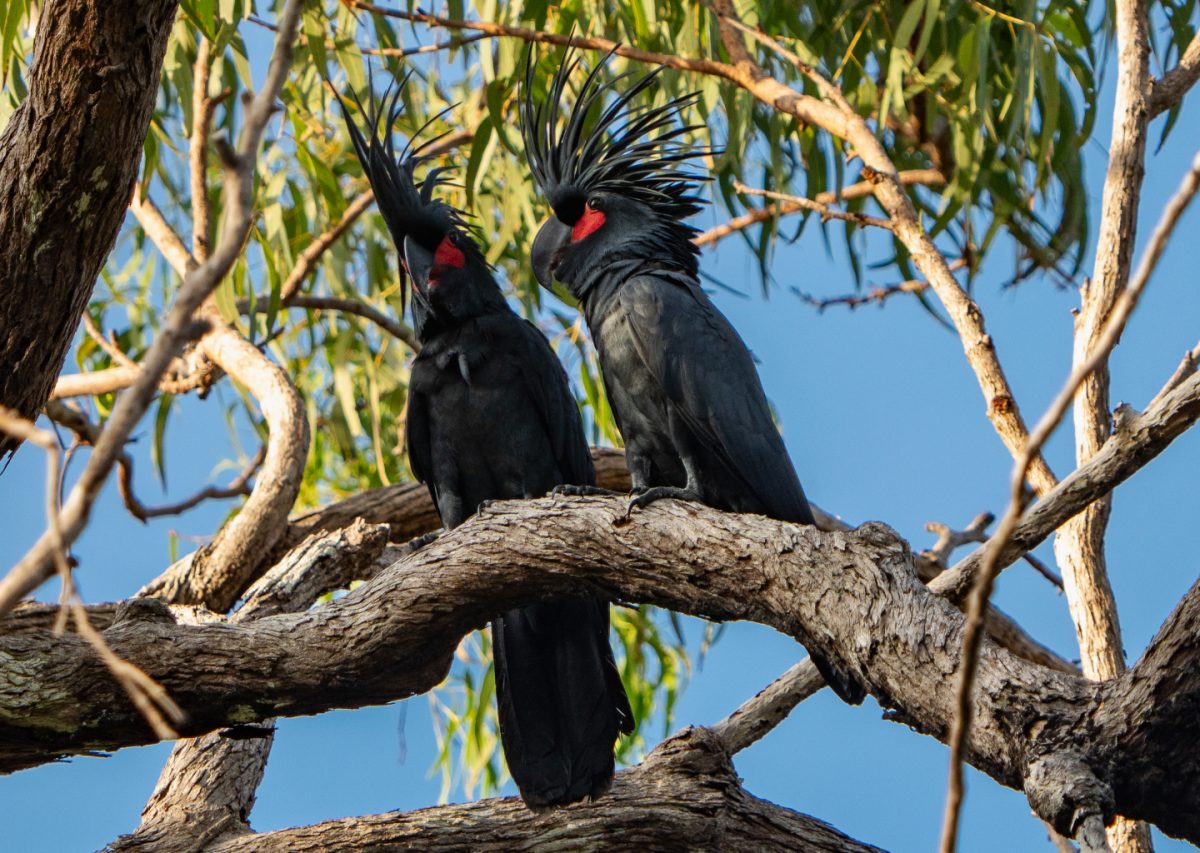
The palm cockatoos are slowly accepting the artificial hollows as part of their mating ritual, boosting hopes they will use them for breeding. Photo: Supplied.


